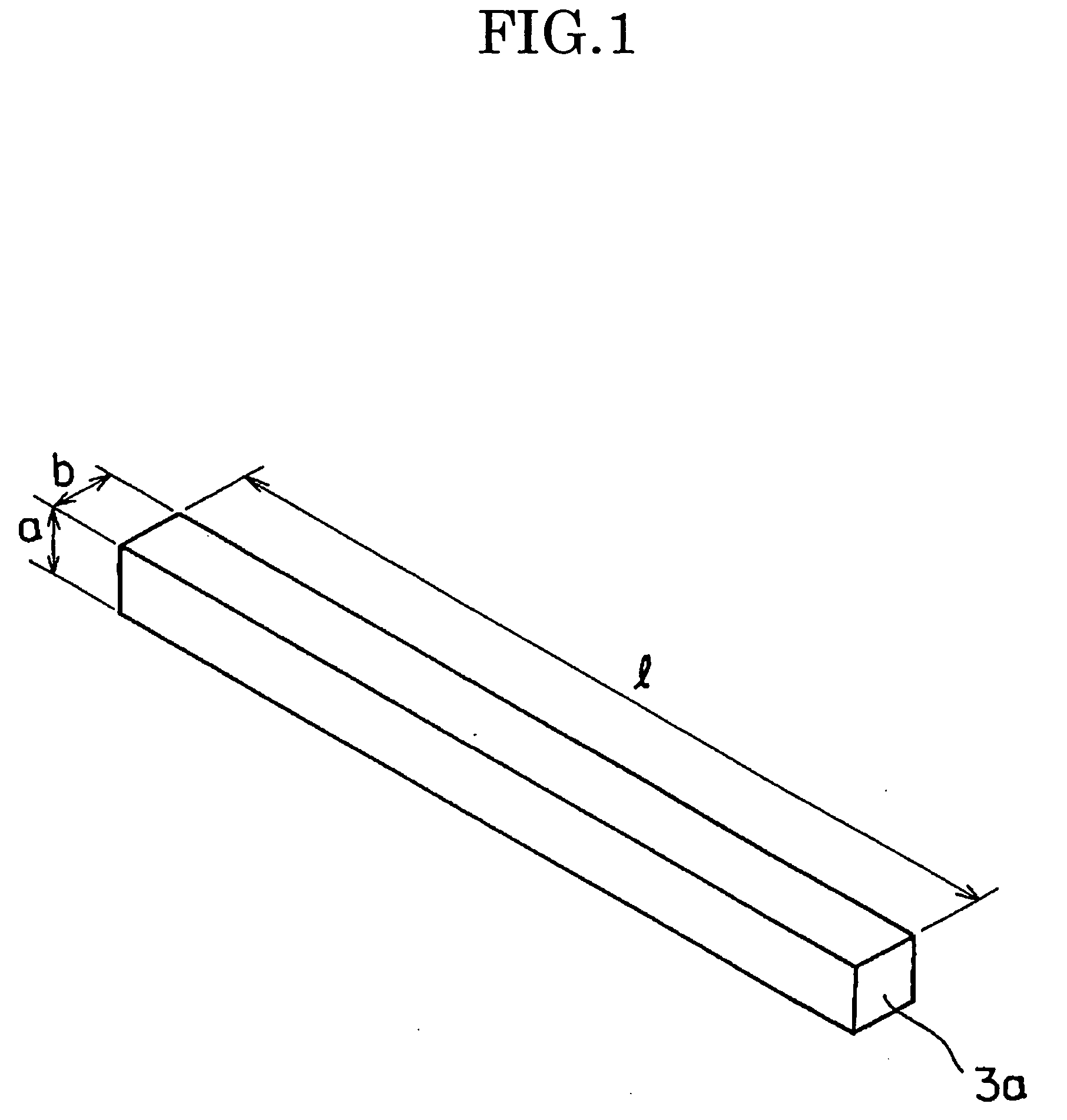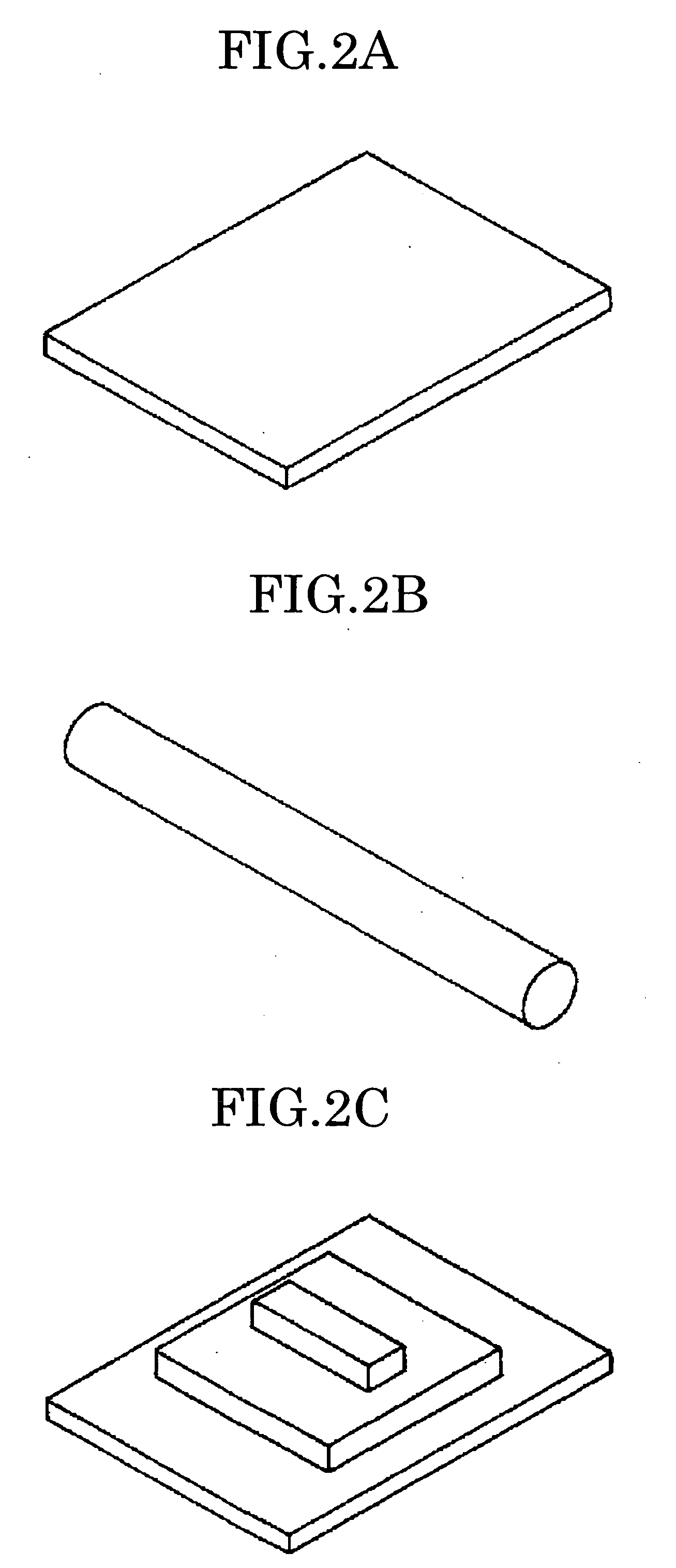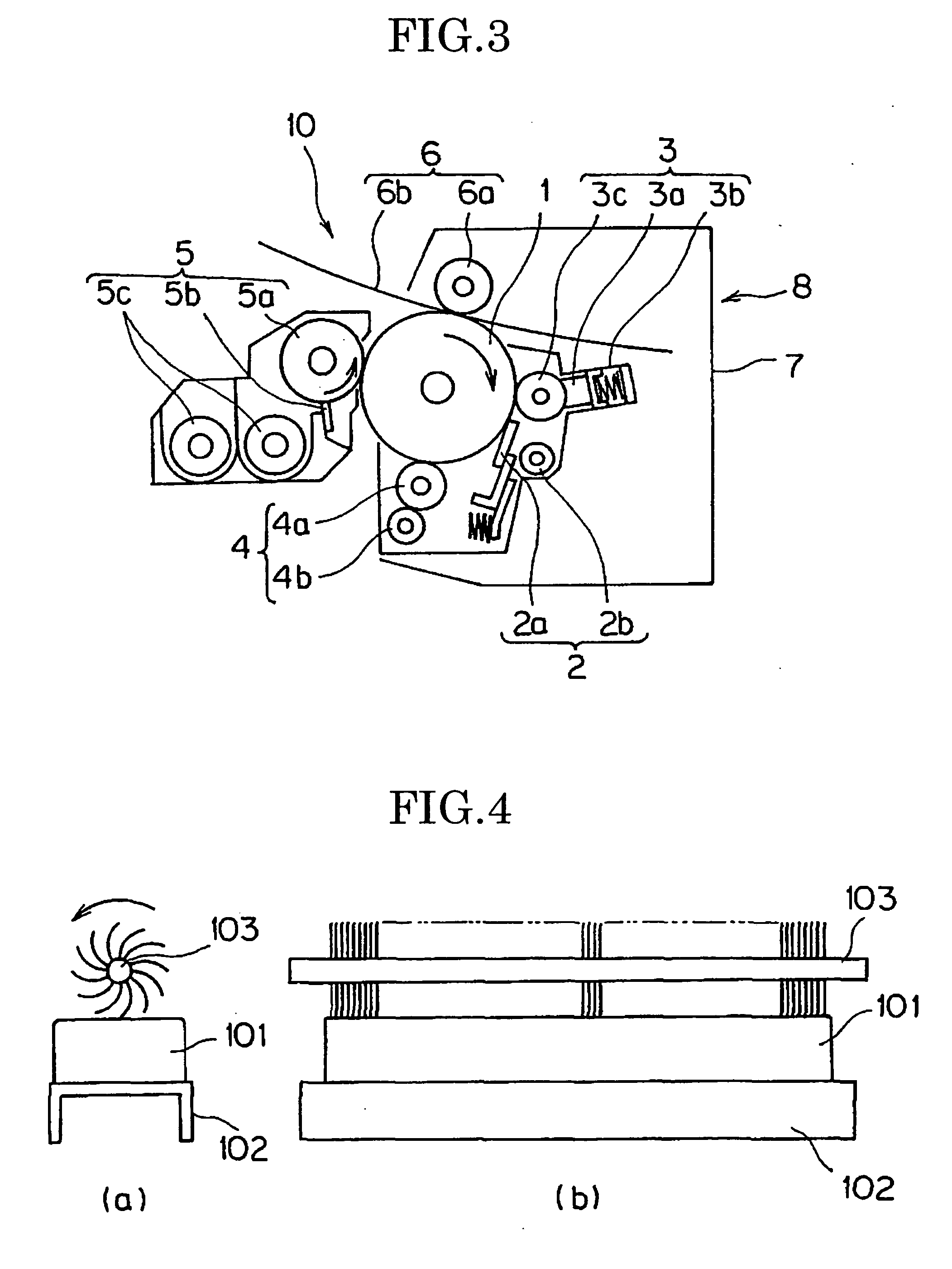Lubricant molded body, lubricant application apparatus, process cartridge, and image forming apparatus
a technology of lubricant molded body and lubricant application, which is applied in the direction of conductive materials, textiles and paper, synthetic resin layered products, etc., can solve the problems of reducing the exchange time of such parts, reducing the use life of image carriers, and increasing the risk of molded bodies being cracked or cut at the time of solidification in cooling. , to achieve the effect of reducing the risk of cracking and cutting, reducing the use life of lubri
- Summary
- Abstract
- Description
- Claims
- Application Information
AI Technical Summary
Benefits of technology
Problems solved by technology
Method used
Image
Examples
example 1
[0073] Die portions 105 and 106 were assembled and fastened together via a middle die portion 104 as shown in FIG. 5 such that grooved faces of the die portions 105 and 106 contacted flat faces of the middle die portion 104, respectively. Each of the die portions 105 and 106 was made of a thick aluminum plate which had, at one face, nine grooves each having a width of 8 mm, a depth of 7 mm and a length of 380 mm. The thus assembled die was assembled and set to have totally eighteen channels, which could form totally eighteen blocks. A mixed solution was obtained by heating 99.9 wt % of zinc stearate and 0.1 wt % of silica (additive) up to 135° C., and was poured into the die heated to 150° C. with a heater, and then a heat insulating lid heated to 140° C. was placed on the die. After the die was kept at 150° C. for ten minutes, it was left in air to be cooled down to 105° C. Then, after the die was kept at 105° C. for fifteen minutes, it was left in air to be cooled down to 50° C. F...
example 2
[0076] Die portions 105 and 106 were assembled and fastened together via a middle die portion 104 as shown in FIG. 5 such that grooved faces of the die portions 105 and 106 contacted flat faces of the middle die portion 104, respectively. Each of the die portions 105 and 106 was made of a thick aluminum plate which had, at one face, nine grooves each having a width of 8 mm, a depth of 8 mm and a length of 390 mm. The die was assembled and set to have totally eighteen channels, which could form totally eighteen blocks. A mixed solution was obtained by heating 63 wt % of zinc stearate, 30 wt % of zinc palmitate, 3 wt % of zinc myristate, 2 wt % oleate, 1 wt % of zinc linoleate and 1 wt % of zinc arachidate up to 135° C. The resulting mixed solution was poured into the die heated to 150° C. with a heater, and then a heat insulating lid heated to 140° C. was placed on the die. After the die was kept at 160° C. for ten minutes, it was left in air be cooled down to 105° C. Then, after the...
example 3
[0079] Die portions 105 and 106 are assembled and fastened together via middle die portion 104 as shown in FIG. 5 such that grooved faces of the die portions 105 and 106 contacted flat faces of the middle die portion 104, repectively. Each of the die portions 105 and 106 was made of a thick aluminum plate which had, at one face, nine grooves each having a width of 11.5 mm, a depth of 16 mm and a length of 400 mm. The thus assembled die had totally eighteen channels, which could form totally eighteen blocks. a mixed solution was obtained by heating 99.5 wt % of zinc stearate and 0.5 wt % of magnesium stearate up to 140° C., and was poured into the die set and heated to 130° C. to 200° C. with a heater, and then a heat insulating lid heated to 140° C. was placed on the die. After the die was kept at 150° C. for ten minutes, it was left in air to be cooled down to not more than 40° C. Thereafter, the die was opened to obtain lubricant molded bodies made of zinc stearate. Such lubricant...
PUM
| Property | Measurement | Unit |
|---|---|---|
| cell diameters | aaaaa | aaaaa |
| average cell diameter | aaaaa | aaaaa |
| porosity | aaaaa | aaaaa |
Abstract
Description
Claims
Application Information
 Login to View More
Login to View More - R&D
- Intellectual Property
- Life Sciences
- Materials
- Tech Scout
- Unparalleled Data Quality
- Higher Quality Content
- 60% Fewer Hallucinations
Browse by: Latest US Patents, China's latest patents, Technical Efficacy Thesaurus, Application Domain, Technology Topic, Popular Technical Reports.
© 2025 PatSnap. All rights reserved.Legal|Privacy policy|Modern Slavery Act Transparency Statement|Sitemap|About US| Contact US: help@patsnap.com



